|
Boulton Paul Balliol
Civilian and Foreign Users
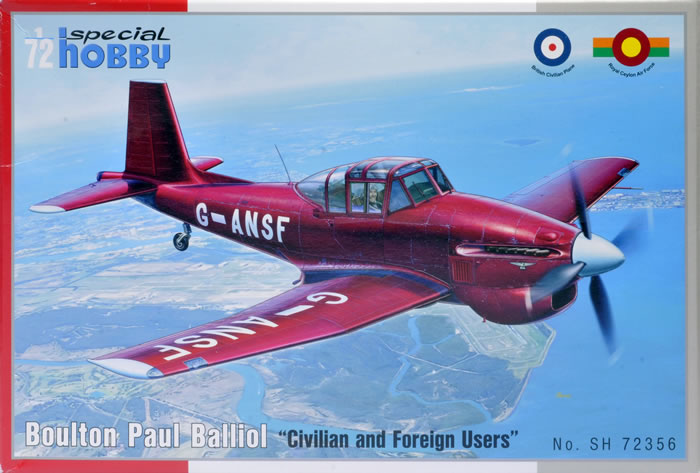
Special Hobby, 1/72 scale
S u m m a r y : |
Catalogue Number: |
Special Hobby Kit No. SH72356 – Boulton Paul Balliol "Civilian and Foreign Users" |
Scale: |
1/72 |
Contents & Media |
47 parts in grey plastic (including two parts not for use), 17 resin parts, one photo-etched fret with 28 parts, a printed acetate film for the instrument panel and markings for three options. |
Price: |
Available on-line from these stockists:
Click here for currency conversion |
Review Type: |
First Look. |
Advantages: |
Cleanly moulded; high level of detail; crisp recessed surface textures. |
Disadvantages: |
Limited run nature (lack of locating pins etc.) and cleanup of parts will require a bit of focus. |
Conclusion: |
Special Hobby's 1/72 scale Boulton Paul Balliol is highly detailed, cleanly moulded, features subtle surface features, makes effective use of resin and photo-etch and if you have a few kits under your belt you won't have too much trouble with the absence of locating pins.
Just take your time aligning parts, test-fit frequently, and you'll have an attractive result.
Recommended. |
Reviewed by Brett Green

Special Hobby’s 1/72 Boulton Paul Balliol is available online from Squadron.com
The Boulton Paul Balliol and Sea Balliol were monoplane military advanced trainer aircraft built for the Royal Air Force (RAF) and the Royal Navy Fleet Air Arm (FAA) by Boulton Paul Aircraft. Developed in the late 1940s the Balliol was designed to replace the North American Harvard trainer and used the Rolls-Royce Merlin engine, with the Sea Balliol a naval version for deck landing training.
The Balliol was developed to meet Air Ministry Specification T.7/45 for a three-seat advanced trainer powered by a turboprop engine, competing against the Avro Athena. It was a conventional low-wing monoplane with a retractable main undercarriage and a fixed tailwheel. Pilot and instructor sat side by side ahead of the observer. The first prototype first flew on 30 May 1947, being temporarily powered by an 820 hp (611 kW) Bristol Mercury 30 radial engine. The second prototype, powered by the intended Armstrong Siddeley Mamba turboprop, first flew on 17 May 1948, the world's first single-engined turboprop aircraft to fly.
The Air Ministry had second thoughts about its training requirements, and issued a new specification, T.14/47, requiring a two-seat trainer, powered by a Rolls-Royce Merlin piston engine. The Merlin powered Balliol, designated Balliol T.2, first flew on 10 July 1948, and after extensive evaluation, it was chosen over the Athena, with large orders being placed to replace some of the Harvards in RAF service. The observer's seat of the Mk 1 was removed, the side-by-side seats remaining.
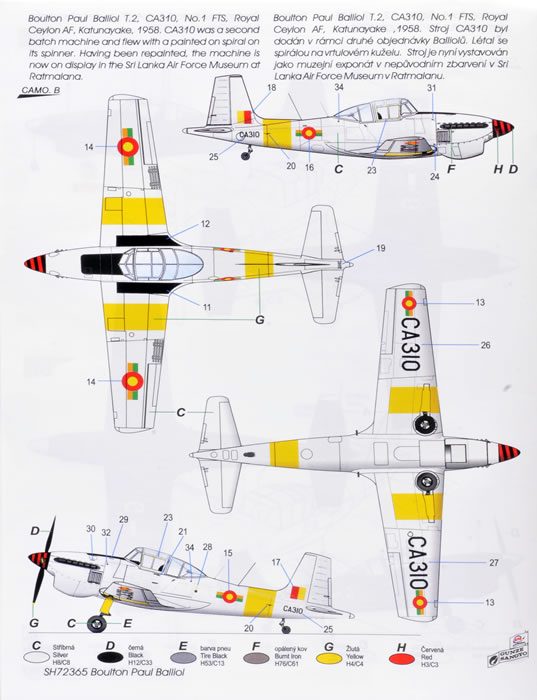
The Sea Balliol T.21 had folding wings and arrestor hook for deck landings. By 1951, however, the Air Ministry changed its mind about its training requirements yet again and decided to introduce a jet-powered advanced trainer, the de Havilland Vampire T.Mk11.
Pre-production Balliols were delivered to the RAF's Central Flying School in 1950, but with the change in air-training policy, the Balliol was only delivered to one Flying Training School, – No. 7 at RAF Cottesmore, replacing their Harvards. The Balliol later served at the RAF College, Cranwell until replaced there by the de Havilland Vampire T.Mk 11 in 1956.
The Balliol also saw limited squadron service from 1953 with No. 288 Squadron RAF based at RAF Middle Wallop. Operations continued until the squadron was disbanded in September 1957.
The Sea Balliols served with 781 squadron at Lee-on-Solent and 1843 Squadron RNVR at Abbotsinch. The last one was delivered in December 1954. Some remained active at Abbotsinch until September 1963.
Two Balliols were used for the testing of radar absorbing coatings.
The only Balliols exported were 12 Mk.2s to the Royal Ceylon Air Force, 7 from RAF cancelled contracts and five from RAF stocks, which were replaced by a further five production aircraft.
Source: Wikipedia
Special Hobby's 1/72 scale Boulton Paul Balliol "Civilian and Foreign Users" comprises 47 parts in grey plastic (including two parts not for use), 17 resin parts, one photo-etched fret with 28 parts, a printed acetate film for the instrument panel and markings for three options.
This is a good quality limited run kit. Although little luxuries such as fuselage locating pins are not present, the parts are cleanly moulded for the main part, and sprue attachments quite modest, so parts removal and cleanup will be fast and easy. You won't find the tall ejector pin towers that older limited run kits suffered from either!
Surface textures are very subtly done, especially the crisply recessed panel lines, and trailing edges are nice and sharp.
Interior detail is enhanced with resin and photo-etched parts. The seats, battery, quadrants and instrument panels are offered in grey resin, while the instrument panel, harness straps and other small details are covered on the brass photo-etched fret.

The other resin parts include drop tanks, main wheels, radiator and wing folds.
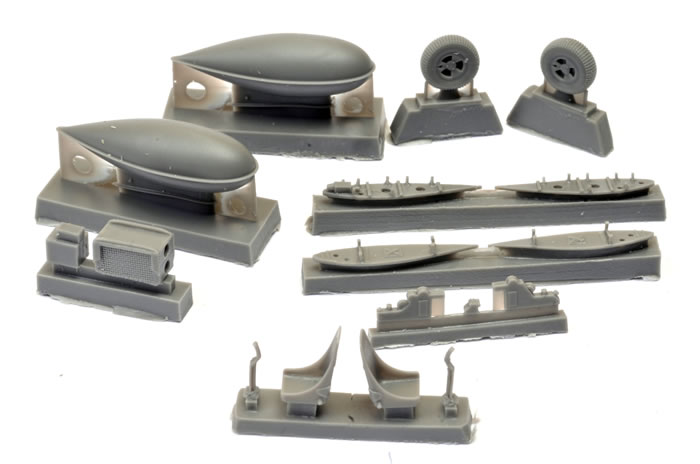
Wings parts are provided for both the folded and unfolded.
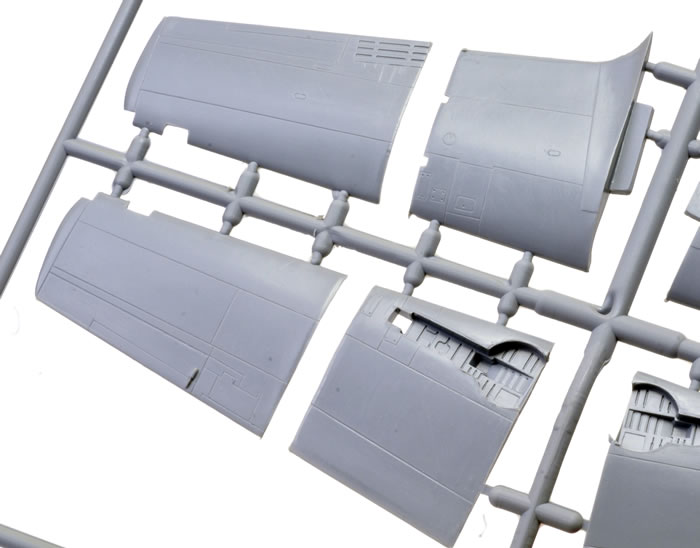
The canopy is a single part. Navigation lights are included too. The transparencies and clear and quite thin.
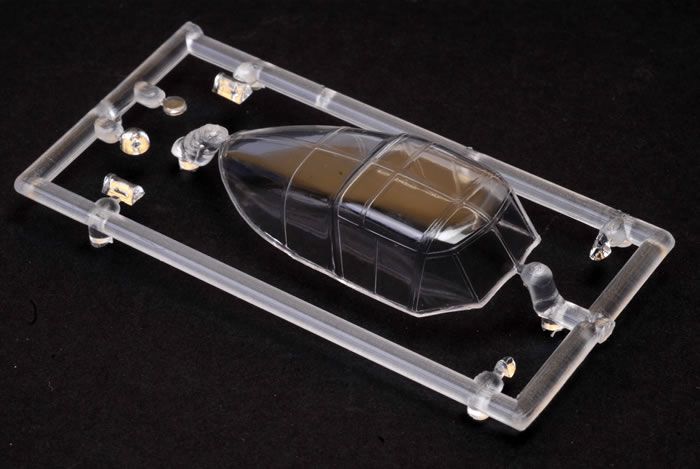
Markings
The decal printer is not indicated on the sheet but colours look great and registration is perfect.
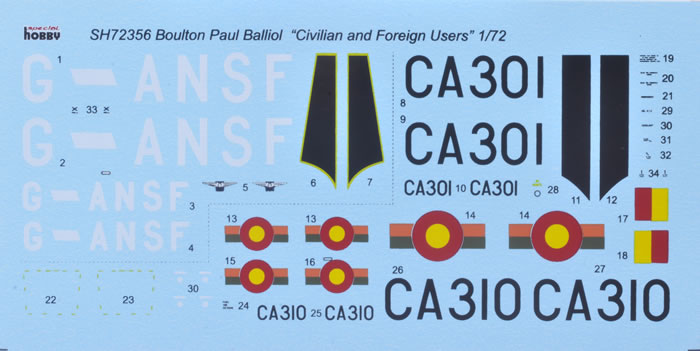
Markings are supplied for two aircraft of the Royal Ceylon Air Force and a Boulton Paul factory demonstrator.
Special Hobby's 1/72 scale Boulton Paul Balliol is highly detailed, cleanly moulded, features subtle surface features, makes effective use of resin and photo-etch and if you have a few kits under your belt you won't have too much trouble with the absence of locating pins.
Just take your time aligning parts, test-fit frequently, and you'll have an attractive result.
Recommended.
Thanks to Special Hobby for the review sample.
Review Text and Images Copyright © 2017 by Brett Green
Page Created 20 July, 2017
Last updated
20 July, 2017
Back to HyperScale Main Page
Back to Reviews Page |
